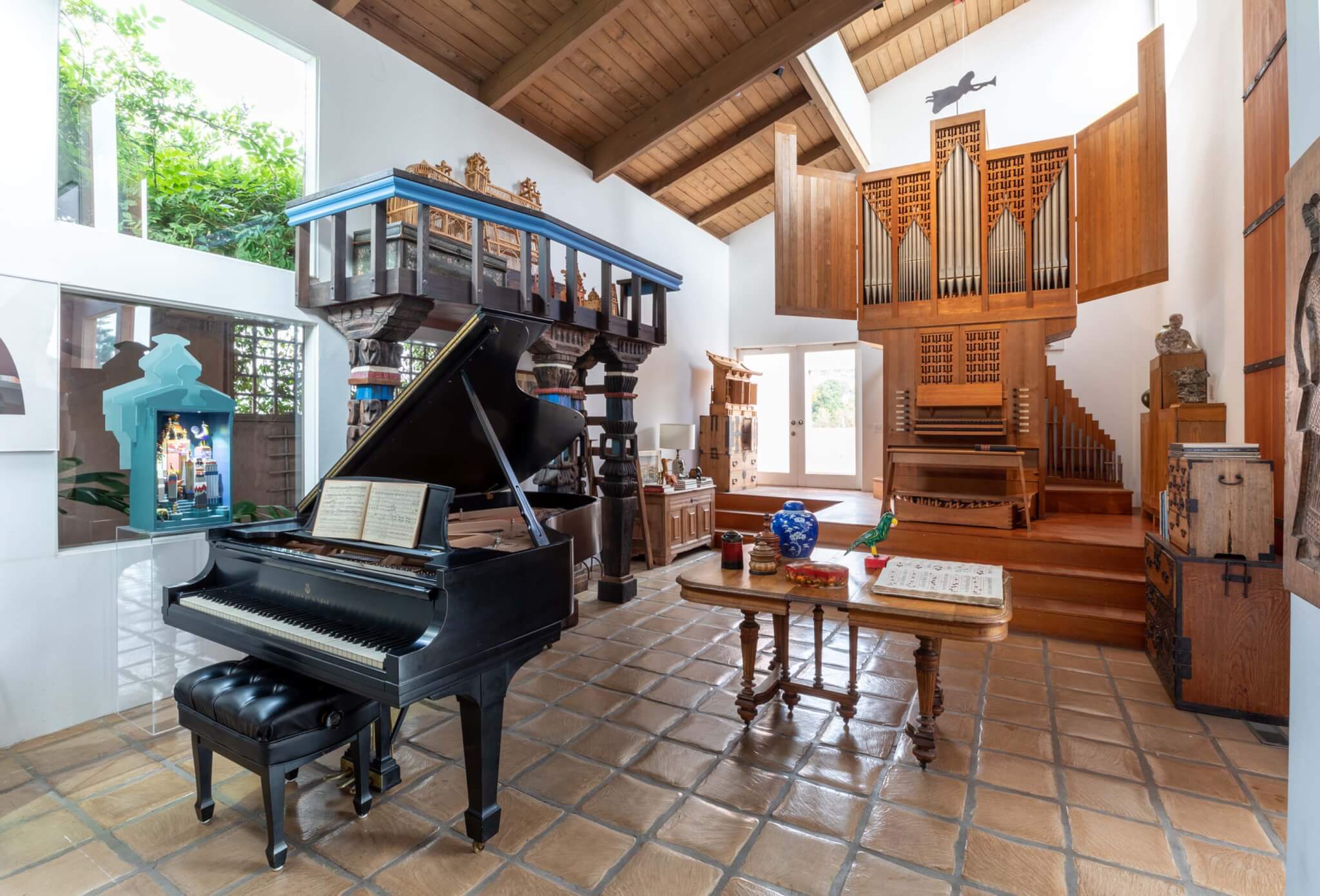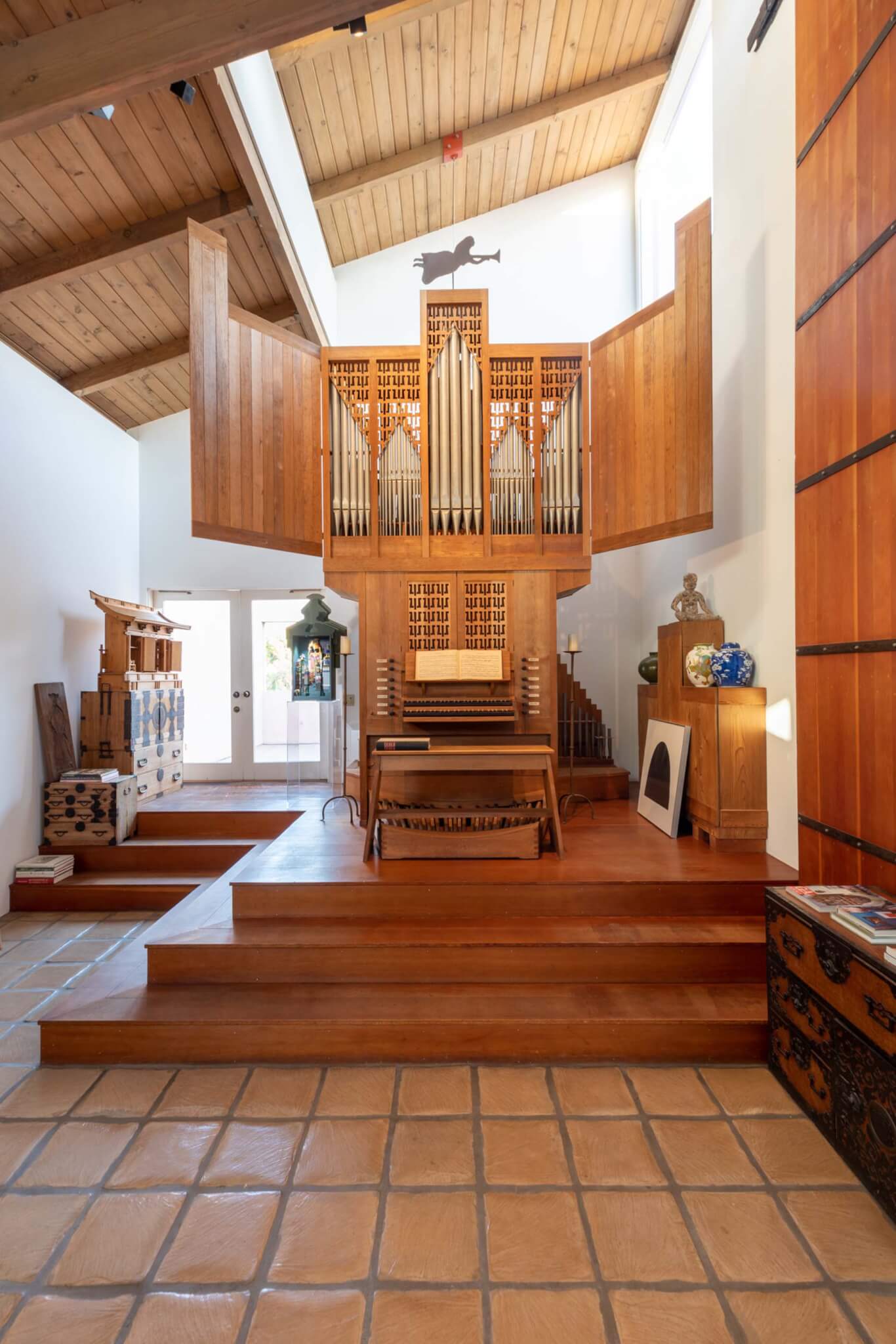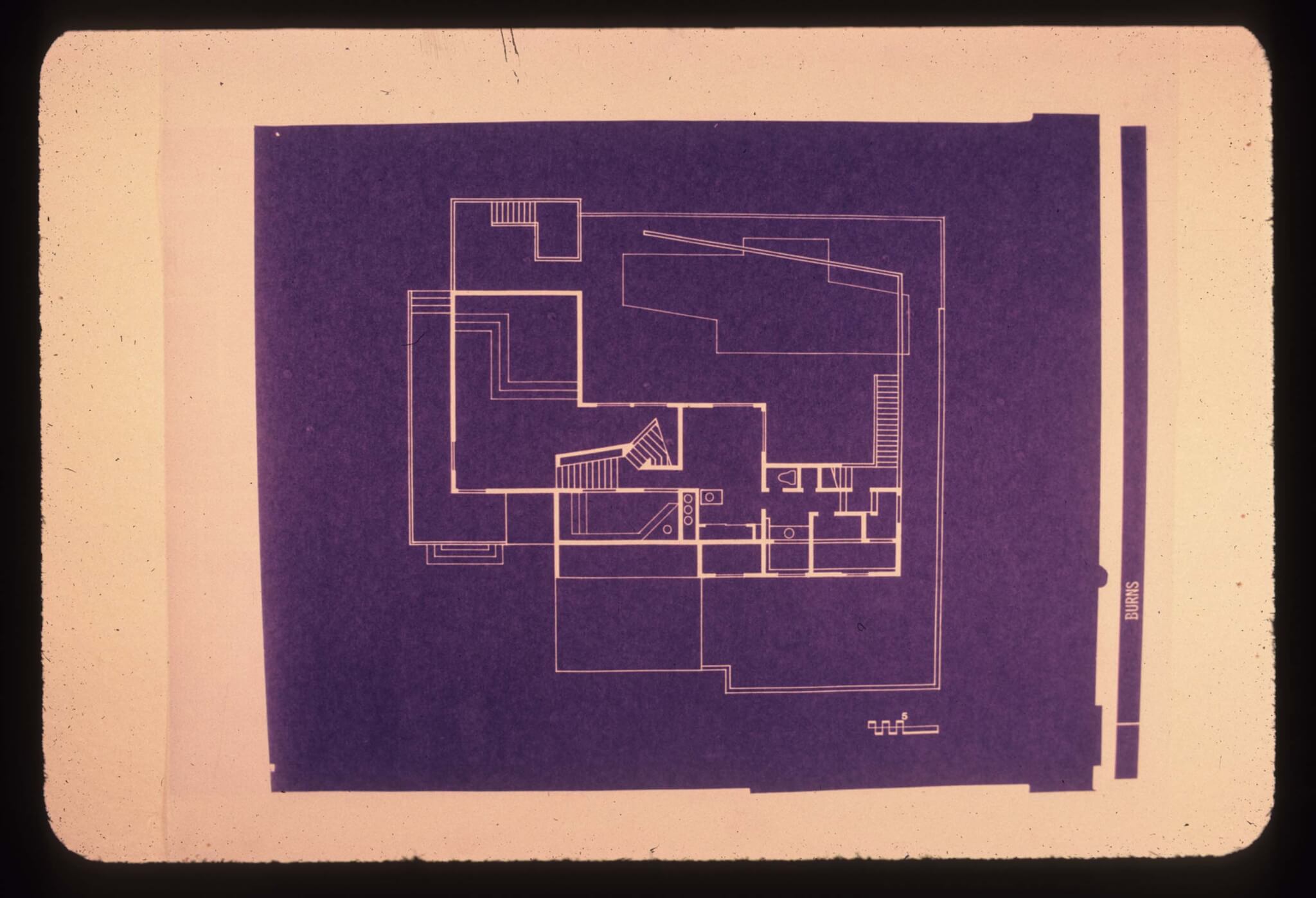Charles Moore Foundation acquires the landmark Burns House and its fabled organ
At the Burns House, a sprawling contemporary dwelling settled atop a hillside in Santa Monica Canyon, music and architecture intertwine. Designed by in 1973 by Charles Moore—the mastermind behind Sea Ranch, the innovative planned-community in Sonoma County—was realized for Leland Moore, an architecture aficionado and urban planning and housing economics professor at the University of California, Los Angeles. Moore was looking for a house that followed traditional Californian design but that could also house a very particular element: a massive timber organ. Burns passed away last year at the age of 87 in his Santa Monica home, and now his family has passed the keys of his Santa Monica residence over to the Charles Moore Foundation, an organization dedicated to preserving the postmodernist architect and educator’s work.
Burns House is the third home designed by Moore to be added to the Foundation’s collection, following the Moore/Andersson Compound—Moore’s personal home and studio in Austin, Texas—and Condominium #9 at Sea Ranch. The Foundation was founded in 1997 in Austin; its work encompasses programming related to the late architect, offering residencies, lectures, conferences, and the publication Placenotes. This latest gift will continue not only the legacy of Moore but of Burns and his love of music.

“In an act of stunning generosity, the late Leland Burns has bequeathed his landmark home to the Charles Moore Foundation. His remarkable gift will allow two long-held aspirations to become a reality,” said Charles Moore Foundation director Kevin Keim in a statement shared with AN.
“First, the Charles Moore Foundation will preserve yet another work of international distinction by one of the most important architects of the 20th century. Second, the Burns House will become a place devoted to music and architecture, a house for learning and scholarship, of rehearsal and study, of performance and creation.”
Located at 230 Amalfi Drive, the home is situated on a precarious, sloping plot with the residence occupying the leveled top of the canyoning site and the gardens cascading down the hillside. Its brightly colored–stucco exterior stands out, yet also seamlessly blends with the natural surroundings provided by the Southern California landscape. As the Charles Moore Foundation described, the design of the Burns House harkens back to that of an idyllic, “compact village, whose flat facades and shed roofs are suggestive of an Italian hill town.”
The pastel tones on the house’s exterior are the work of Tina Beebe, a Yale student researching architecture and color, alongside Josef Albers, who experimented on site with numerous shades of pinks, oranges, and reds to create the finished product.

While the home itself is a wonder with its angular rooflines and pinkish-hued facades, its furnishings put on an equally awe-inspiring performance. The centerpiece of the interior—and inspiration for the whole of the design—is a Baroque-style pipe organ designed by German organ builder Jürgen Ahrend. The monumental musical instrument was custom-built for the house. It spans two floors and stands pedestal-like atop the low-lying stair platform; its 529 lead pipes are covered by a decorative cedar wood fretwork. A trumpet balcony, sourced from Mexico, formed of carved wood with four legs sitting adjacent to the organ serves as a choir loft. The music room was acoustically optimized; thick plaster walls and tile flooring, along with a 23-foot tall sliding Douglas fir door which closes off the space, both amplify and dampen the resounding music, resulting in a chamber-like space that could only be likened to a miniature concert hall.
Other eccentricities of the Burns House are its numerous staircases, including one which takes cues from the stone stairwell located in England’s Wells Cathedral monastery, and another which wraps around the house’s exterior. Staggering the walls of the main staircase is a “cliff dwelling” of shelves lined with books.

As Keim explained in an Instagram post announcing the news, the transfer was years in the making. “[Burns] and I became friends when we met nearly 25 years ago. When [Burns] first asked over lunch 12 years ago how the Burns House might be best preserved, we began making plans that have led to this wonderful reality. I am so, so grateful and humbled that this special man has placed his trust in us to allow this place to flourish.”
Through the Charles Moore Foundation the Burns House will be maintained as a location for preserving architecture, in addition to music. The foundation explained it plans to set up the residence to host residency programs for designers of all kinds, including musicians, composers, architects, and writers to learn from the respective work of Moore and Burns, and let it influence their own creativity.
The Charles Moore Foundation will share more details and information about the future programming in the coming weeks.

